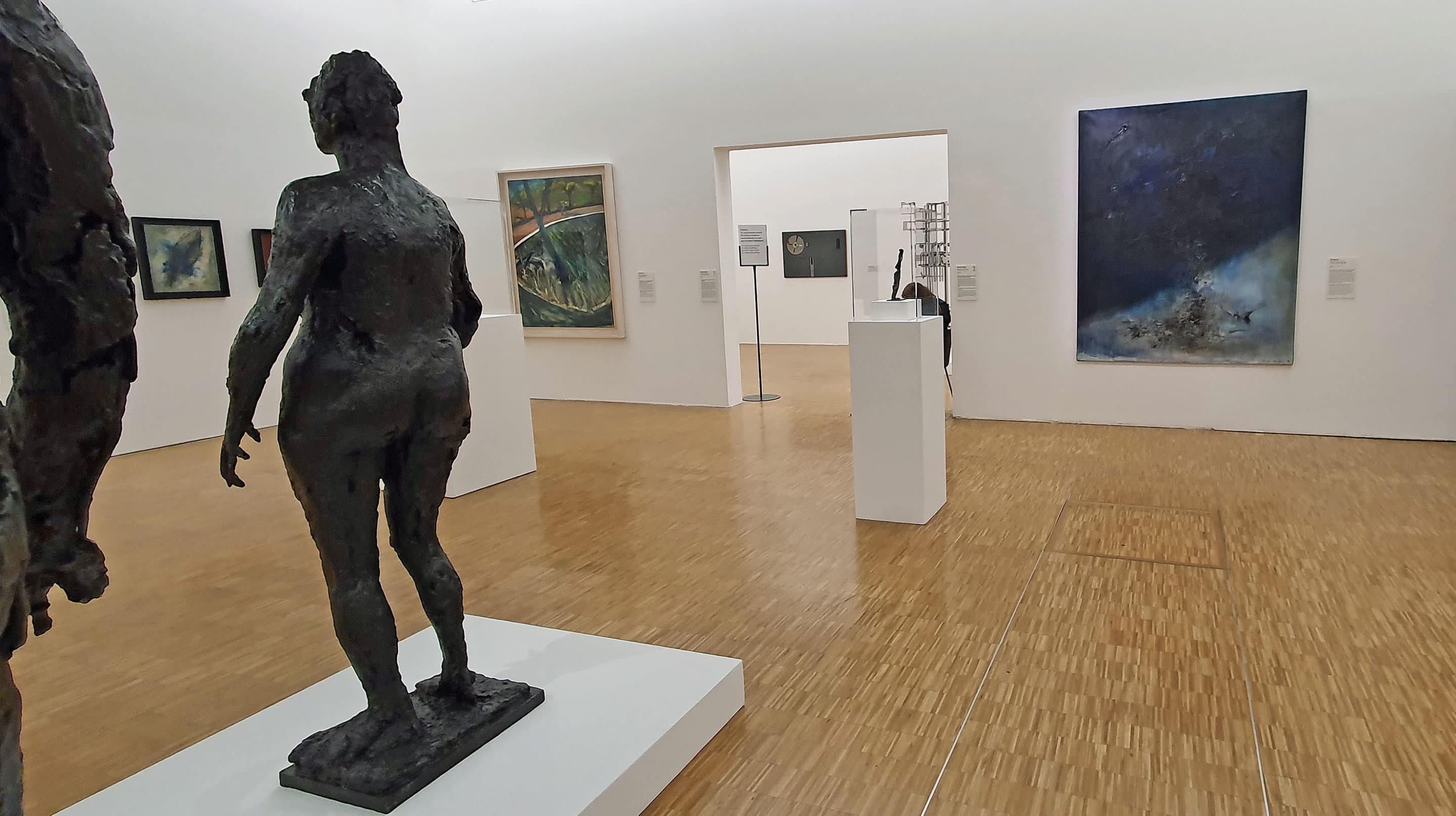
Past Exhibition 01.01 – 30.04.2022
News about the presentations of paintings in various museums Winter 2021 – Spring 2022
Since August 1st 2021, the National Museum of Modern Art unveiled within the Centre Georges Pompidou the new presentation of its permanent modern collections until December 31st 2022.
The room 26 entitled ‘Gesture and matter’ evidences the renewal of painting in Paris after the end of the World War II. “This different art, called informal or lyrical, enhances the work of the matter and the expressiveness of the gesture.”
Some of the artists re-invent painting lending accent to the materiality of their works by working on impasto, piling of layers and scratches. This is the case with Jean Dubuffet (Michel Tapié soleil, 1946; bought in 1992), with Jean Fautrier (L’Ecorché, 1944; dation in 1997 and Femme douce, 1946; bought in 1982), with Wols (Il me regarde, 1940/1951; dation in 2011 and Aile de papillon, 1947; offered in 1979) or Christo (Cratère, 1960, offered by the artist in 2020).
Others like Francis Bacon (Van Gogh in a landscape, 1957; bought in 1982) remain true to a figuration full of freedom, strength and contrasts. Meanwhile Zao Wou-Ki explores a very personal path: the Chinese signs he had incorporated in his paintings have turned into colored movements, creating a vibrant rhythmical and nervous abstraction (18.10.59 – 15.02.60, 1959-1960; bought in1960)
Several sculptures by Germaine Richier, who was close to these painters – especially to Zao Wou-Ki with whom she collaborated on a painted sculpture – punctuate the room: the strength and materiality of L’Orage, 1947-1948 (bought in 1949) and of l’Ouragane, 1948-1949 (bought in 1957) create an absolute resonance with the turmoil and the sensitivity of the paintings of this innovative era.
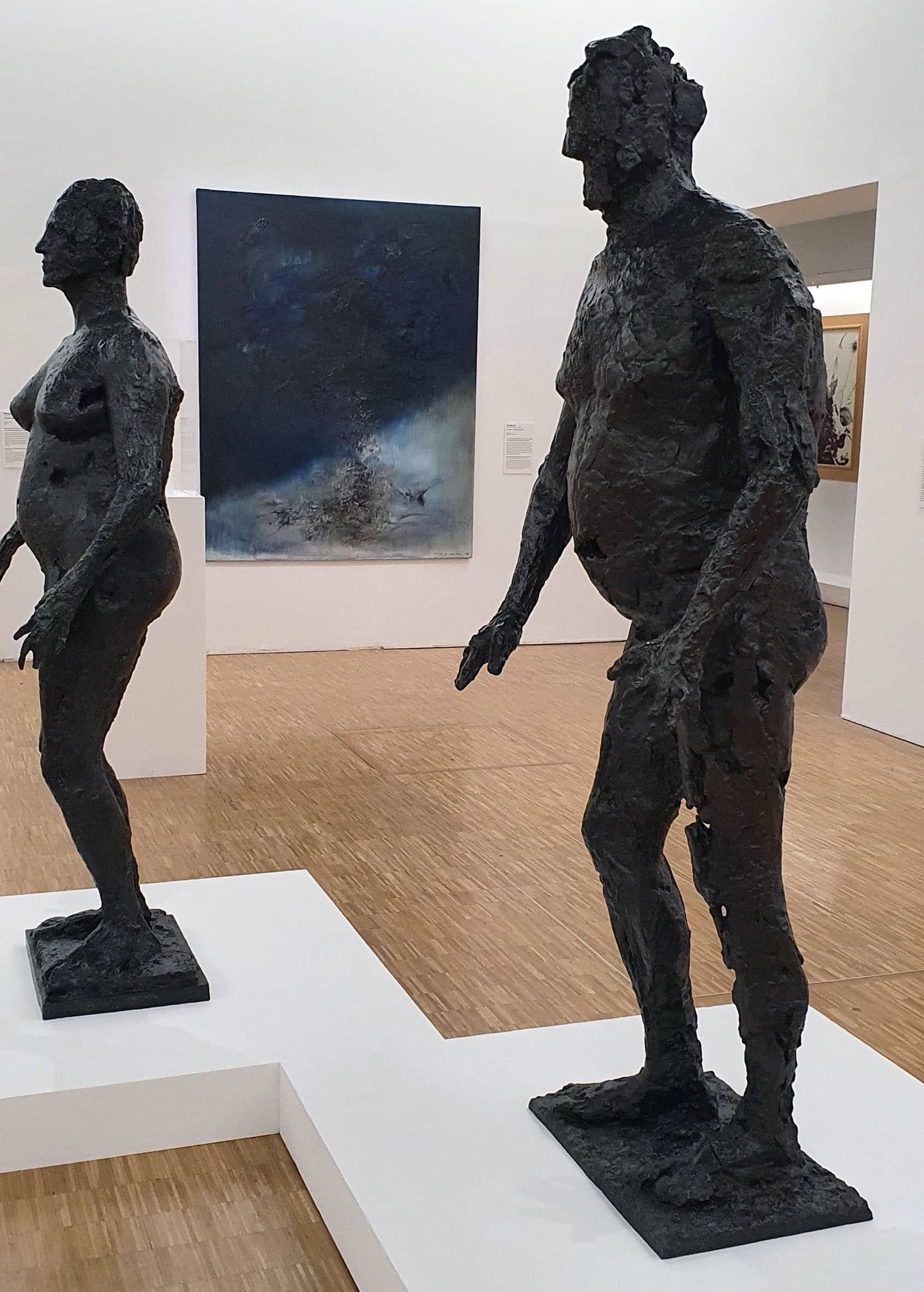
Paris, musée national d’art moderne, room 26, Zao Wou-Ki and Germaine Richier (Reserved rights)

Paris, musée national d’art moderne, room 26, Germaine Richier, Jean Fautrier, Francis Bacon and Zao Wou-Ki (Reserved rights)
The new presentation of the permanent collection of the Musée Cernuschi in Paris, as wished by its Director Eric Lefebvre in 2020, always enhances the richness of the Chinese and Japanese collections, but also the Vietnamese and Korean ones. This is how we can see in the rooms dedicated to ancient Chinese bronzes, the works collected by Zao Wou-Ki and offered to the museum in 2016 by his wife, Françoise Marquet-Zao.
A showcase in contemporary rooms highlights another part of the donations. It presents five rare ceramics created by the artist around 1954: four bowls and a dish in bluish hues, decorated with motifs derived from archaic Chinese signs. This selection is completed by a porcelain, a unique piece painted by the artist at the Manufacture nationale de Sèvres in 2007, using the famous ‘Sèvres blue’, on a Gauvenet vase, a form selected from the specific ancient repertoire of the manufactory.
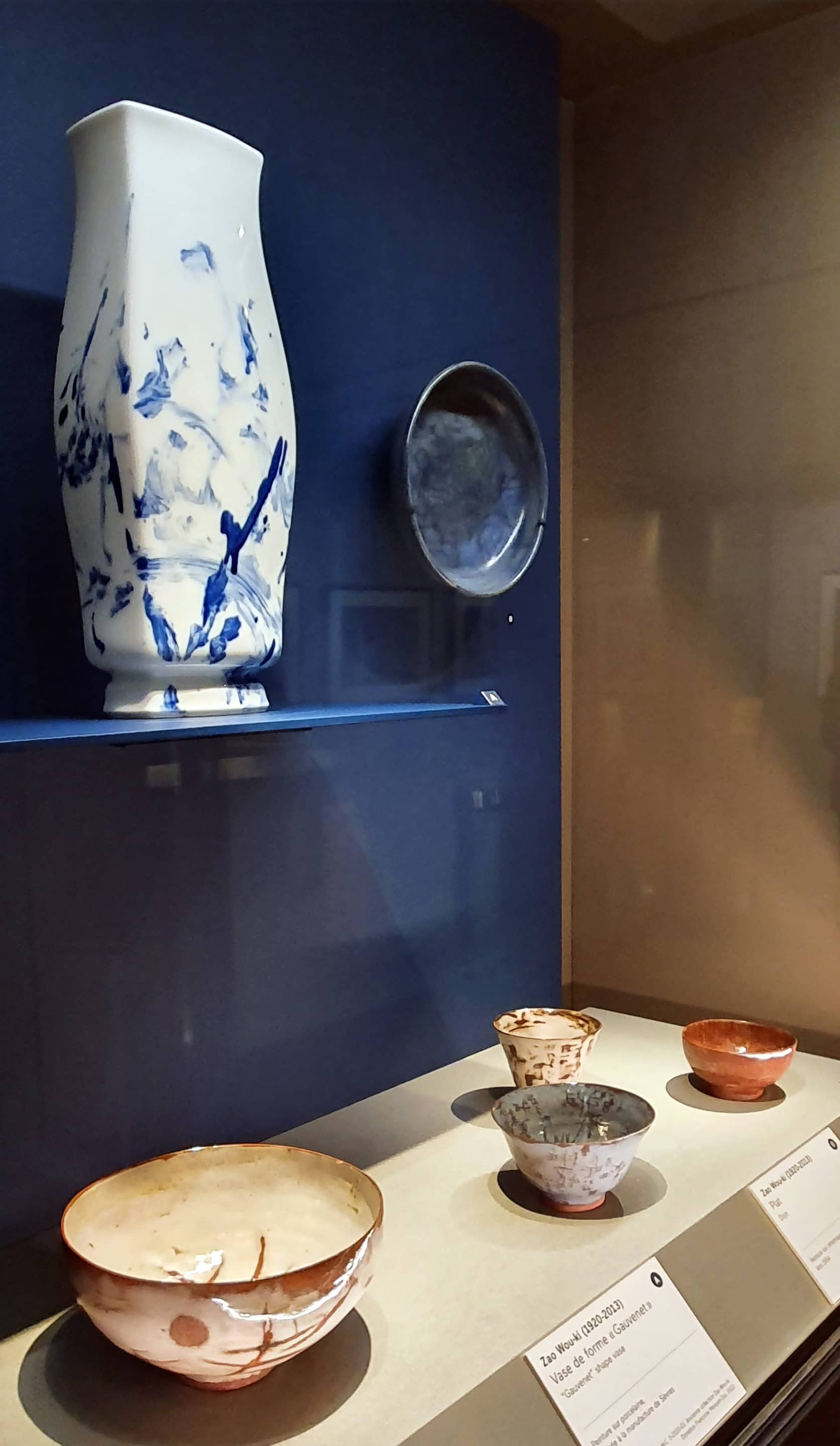
Paris, Musée Cernuschi, Ceramics by Zao Wou-Ki (Reserved rights)
The Musée d’art moderne de Paris (former MAMVP) has unveiled, starting January 1st 2022, the new presentation of its permanent collections. Room 9 exhibits Zao Wou-Ki’s large painting entitled 06.01.68 (260 x 200 cm, bought by the museum in 1971).
This room also includes works from Zao Wou-Ki’s close friends such as T 1946-16 by Hans Hartung (oil on canvas, 1946, 145 x 96 cm, bequest of Dr Girardin in 1953) and Propositions contestées by Maria Helena Vieira da Silva (oil on canvas, 1966, 73 x 116 cm, bought to the artist in 1968) or from artists linked to the abstract art of the second half of the 20th Century such as Composition 228 by Chu The-Chun (oil on canvas, 1966, 195 x 130 cm, bought to the artist during the event entitled Salon des réalités nouvelles in 1967) and ETC IV, 30.3.1967 by Jean Degottex (Indian ink on canvas, 1967, 213 x 129 cm, bought in 1999).
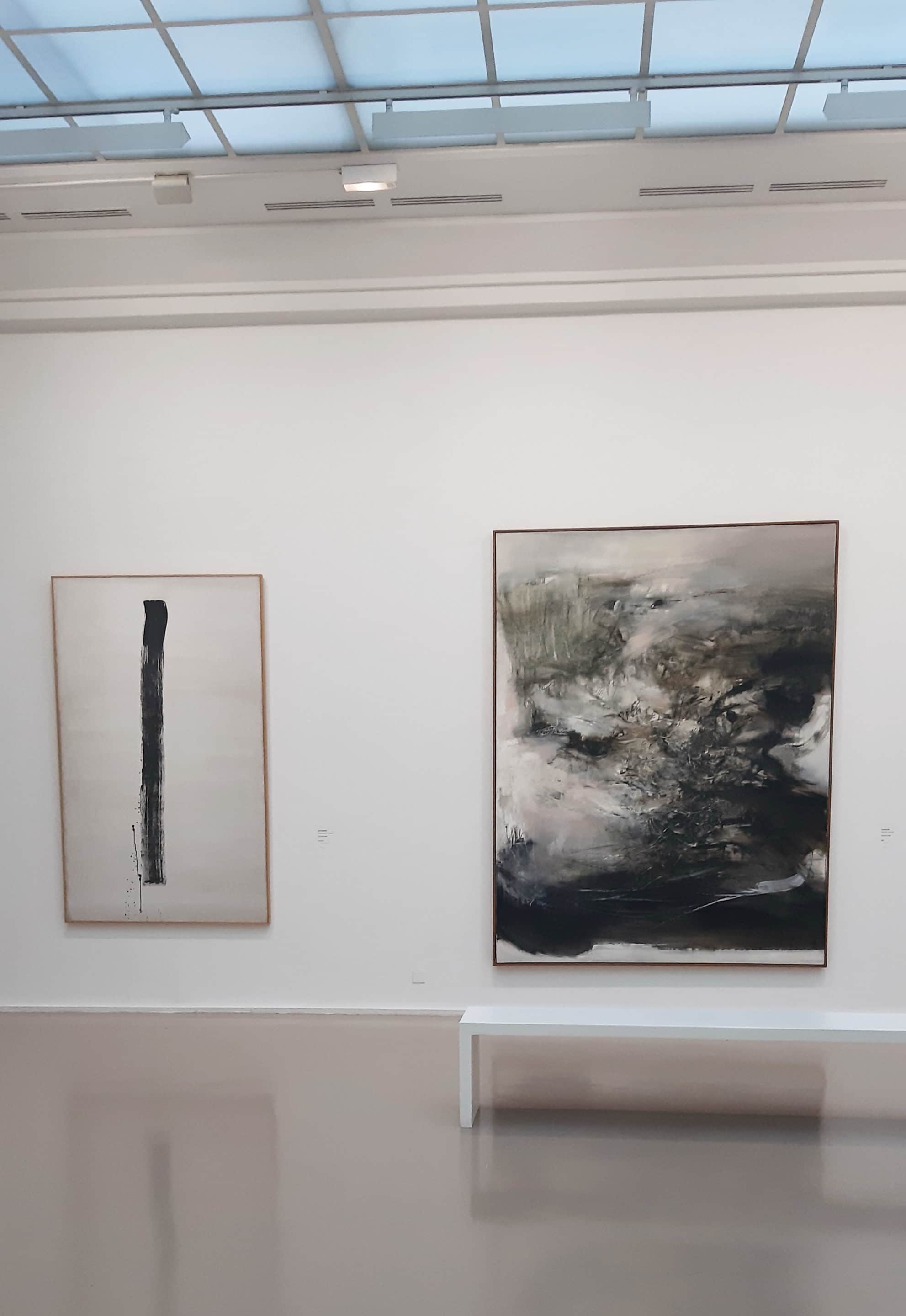
Paris, Musée d’art moderne. Room 9, Zao Wou-Ki, Jean Degottex. Photo Marianne Sarkari (Reserved rights)
The Musée d’art, histoire et archéologie in Evreux – Normandy exhibits in room 8 on the second floor its substantial collection of abstract paintings from the second half of the 20th Century.
Neighboring with works by his friends Joan Mitchell, Hans Hartung, Pierre Soulages or Simon Hantaï, Zao Wou-Ki’s painting 15.12.61 (200 x 180 cm, long term loan of the Musée national d’art moderne since 1991) is back on the walls of the Norman museum after its presentation during the monographic exhibition of the Musée d’art moderne de la Ville de Paris, Zao Wou-Ki. L’Espace est silence in 2018-2019.
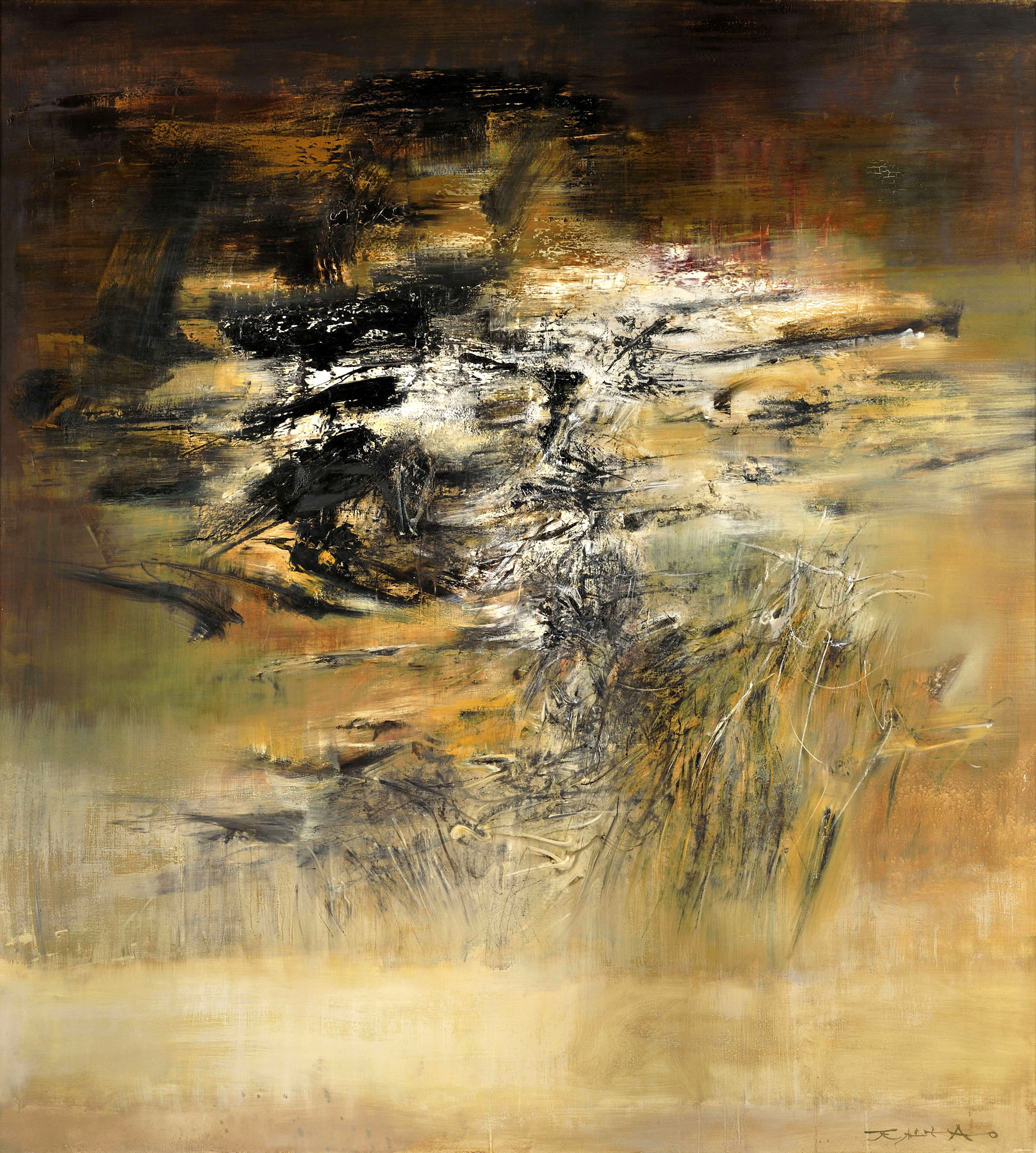
Zao Wou-Ki. 15.12.61 (200 x 180) (musée d’Art, Histoire et Achéologie, Evreux). Reserved rights
Finally, the Artizon Museum in Tokyo (former Bridgestone Museum of Art) goes on exploring the fabulous collections of the Ishibashi Foundation with their new temporary exhibition, Chasing the Horizon: 1952-2022 Ancient, Impressionist and Contemporary Art, presented from January 29th to April 10th 2022.
After a total renovation of the museum which lasted five years, including the complete reconstruction of the building itself, the Artizon Museum exhibits and highlights the Western and Japanese modern collections bequeathed by Shojiro Ishibashi (1889-1976), later supplemented with the ancient art and abstract art collections of his son Kan’ichiro Ishibashi (1920-1997), offered to the museum by his heirs in 1998.
This exhibition thus presents 170 works reflecting the enrichment of the museum’s collections from the foundation of the Bridgestone Museum of Art by Shojiro Ishibashi in 1952 till the most recent acquisitions of contemporary art.
A selection of works by Zao Wou-Ki and many documents evoke the special links the artist had with the Ishibashi family, from his visit in Tokyo with Pierre Soulages in 1958 until the last monographic exhibition the museum dedicated to him in 2004-2005. Among these works, the large ink dated 1982, more than 3.7 meters long, is presented to the public for the first time in 14 years.
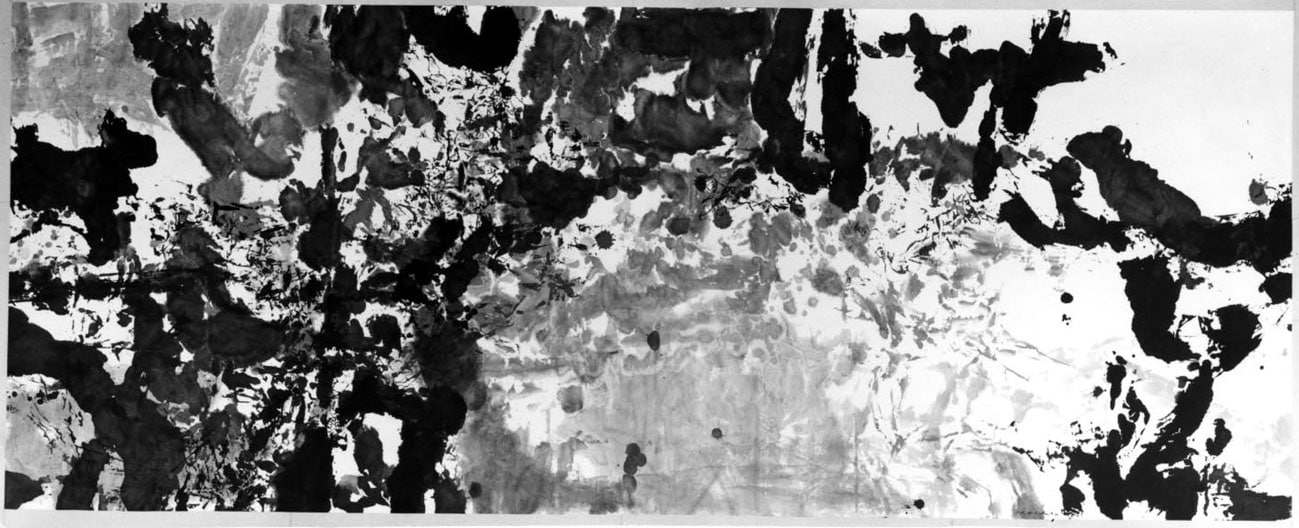
Zao Wou-Ki. Indian ink, 1982 (145.5 x 372.5), Tokyo, Artizon Museum (Reserved rights)
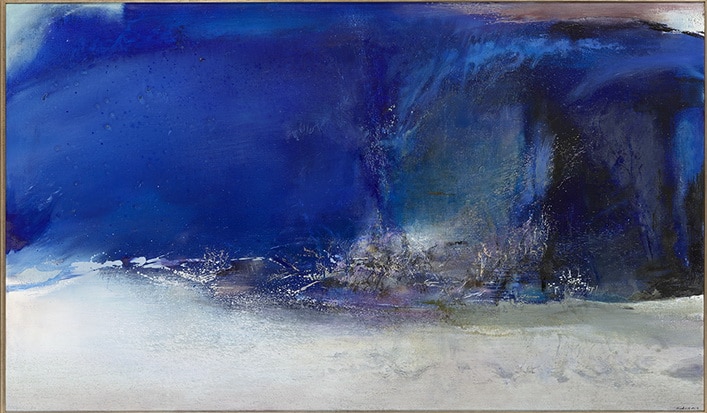
Zao Wou-Ki. 07.06.85 (115 x 195 cm), Tokyo, Artizon Museum (Reserved rights)
